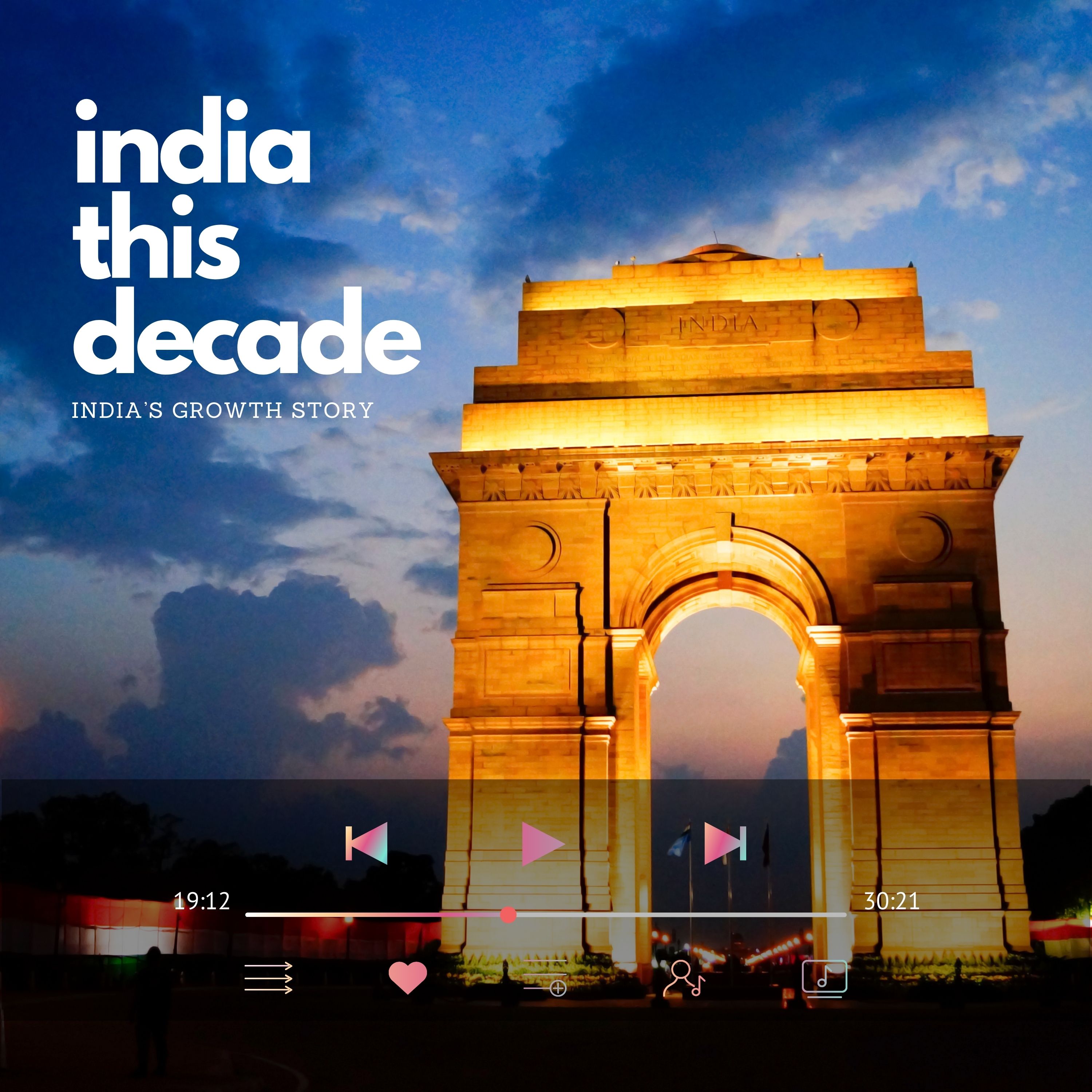

The E-commerce Revolution in India
India This Decade
| Amaya | Rating 0 (0) (0) |
| Launched: Sep 29, 2023 | |
| indiathisdecade@gmail.com | Season: 1 Episode: 6 |
India's e-commerce industry has been growing rapidly, with the market expected to reach $200 billion by 2026 and $350 billion by 2030. This growth can be attributed to increasing internet penetration, rising digital literacy, and the expanding digital footprint in Tier III and IV areas, as well as rural India. The Indian government has played a significant role in fostering this growth, allowing 100% FDI under the automatic route for B2B e-commerce and the marketplace model of e-commerce. This has attracted both domestic and foreign investors, leading to a surge in investments and innovation in the e-commerce space. The e-commerce revolution in India has brought about significant positive changes to the nation's economy, revolutionizing the shopping experience for millions of consumers. It has expanded the reach and growth prospects of small sellers and MSMEs, enabling them to overcome previous challenges such as higher operational costs and limited market access.
SUBSCRIBE
Episode Chapters

India's e-commerce industry has been growing rapidly, with the market expected to reach $200 billion by 2026 and $350 billion by 2030. This growth can be attributed to increasing internet penetration, rising digital literacy, and the expanding digital footprint in Tier III and IV areas, as well as rural India. The Indian government has played a significant role in fostering this growth, allowing 100% FDI under the automatic route for B2B e-commerce and the marketplace model of e-commerce. This has attracted both domestic and foreign investors, leading to a surge in investments and innovation in the e-commerce space. The e-commerce revolution in India has brought about significant positive changes to the nation's economy, revolutionizing the shopping experience for millions of consumers. It has expanded the reach and growth prospects of small sellers and MSMEs, enabling them to overcome previous challenges such as higher operational costs and limited market access.
India's e-commerce industry has been growing rapidly, with the market expected to reach $200 billion by 2026 and $350 billion by 2030. This growth can be attributed to increasing internet penetration, rising digital literacy, and the expanding digital footprint in Tier III and IV areas, as well as rural India. The Indian government has played a significant role in fostering this growth, allowing 100% FDI under the automatic route for B2B e-commerce and the marketplace model of e-commerce. This has attracted both domestic and foreign investors, leading to a surge in investments and innovation in the e-commerce space. The e-commerce revolution in India has brought about significant positive changes to the nation's economy, revolutionizing the shopping experience for millions of consumers. It has expanded the reach and growth prospects of small sellers and MSMEs, enabling them to overcome previous challenges such as higher operational costs and limited market access.
E-commerce has significantly impacted traditional retail in India in various ways, such as increased competition, quality of products and services, consumer behavior changes, retail sector growth, and employment opportunities. E-commerce has intensified competition within the retail sector, making the market more competitive. Online marketplaces offer a wide range of products and services, compelling traditional retailers to adapt and innovate to stay in business. E-commerce players have improved the quality of products and services, offering customers a better shopping experience. This has forced traditional retailers to enhance their offerings to meet customer expectations. The convenience of e-commerce has changed consumer expectations. Consumers now expect 24/7 accessibility, personalized recommendations, and hassle-free returns. Traditional retailers must adapt to meet these changing demands to remain competitive in this dynamic market. E-commerce has accelerated the growth of India's retail sector, becoming a more viable alternative compared to actual stores due to its discounts and convenience of exchange. This has led to a shift in consumer preferences, with more people opting for online shopping over traditional retail. E-commerce has created new and ample opportunities for employment in India, which has had both positive and negative effects on the traditional retail sector. While it has generated new jobs, it has also intensified competition and created obstacles for traditional businesses and the unorganized sectors of India. Overall, the rise of e-commerce has disrupted traditional retail in India, forcing retailers to adapt and innovate to stay competitive in the evolving market landscape.
The rise of e-commerce in India has led to significant changes in consumer shopping habits. Some of the key changes include preference for online shopping, increased price sensitivity, product comparison, a shift towards mobile shopping, omnichannel shopping, and Buy Now, Pay Later (BNPL) adoption. With the convenience and accessibility of e-commerce platforms, more consumers are opting for online shopping over traditional retail. Online shopping platforms often offer discounts and deals, making consumers more price-sensitive and inclined towards offers and discounts. E-commerce platforms allow consumers to easily compare products and prices, leading to more informed purchasing decisions. The growth of mobile internet usage in India has led to an increase in mobile app usage for shopping. In 2022, Indians spent 8.7 billion hours using shopping apps, up 16% from 7.5 billion hours in 2021. Over 60% of urban consumers prefer to shop both online and offline, highlighting the shift in consumer preferences towards a seamless shopping experience across channels. The BNPL model has gained popularity in India, allowing consumers to purchase products beyond their immediate purchasing power and encouraging bigger purchases. Overall, the rise of e-commerce in India has led to a transformation in consumer shopping habits, with a growing preference for online shopping.


